- Home
- Garden Wildlife
- Arthropods
- Arachnids
- Mites
- Gall mites
Gall mites
Plant galls are abnormal growths produced by a plant in response to the presence of a gall-forming organism. Many insects and mites, as well as some fungi and bacteria, are capable of causing galls, and these are introduced on our page here.
Species in Britain and Ireland
Gall mites are mostly in the Eriophyidae family of mites, the few exceptions belonging to the family Tarsonemidae, such as Phytonemus pallidus on Michaelmas daisy These mites are microscopic (<0.5mm) in size but their presence is readily seen by the abnormal growths that they cause on plants. The galls occur in a variety of forms but are usefully specific to the species of gall mite.
Enclosed pouch or pimple on upper leaf surface. Examples are Lime tree nail gall, caused by Eriophyes tiliae on broad-leaved lime Tilia platyphyllos, small-leaved lime T. cordata, and common lime T x europaea; and Eriophyes lateannulatus on small-leaved lime Tilia cordata; pimple galls caused by Aceria macrorhyncha and Aceria cephalonea on sycamore, and Aceria myriadeum on field maple; Elm pouch gall mite, Aceria campestricola on elm; Plum gall mite, Eriophyes similis, on plums and damsons
Biology
Gall mites feed by sucking sap from their host plants. While doing so, they secrete chemicals that alter the plant’s normal development. The gall mites live and feed within the gall structures that they have helped create. Gall mites in the Eriophyidae family have slender elongate bodies with only two pairs of legs.
Some gall mites induce a dense growth of short hairs, mainly on the underside of affected leaves. This type of growth is known as a felt gall or erineum. The hairs are initially creamy white but often become brownish towards the end of summer. However, if the felt gall is developing on a purple-leaved form of a tree, such as beech or sycamore, the hairs are usually pinkish red.
Dispersal to new host plants is probably brought about by the tiny mites being carried by the wind, or by hitching a ride on more mobile insects or other animals.
Life cycle
Gall mites can have many generations within their galls. For most gall mites, the breeding season is during the summer but some, such as blackcurrant big bud mite, breed during the winter. Those that form galls during the summer usually vacate the galls in autumn and overwinter underneath bud scales or in bark crevices.
Role of gall mites in gardens
Most gall mites are relatively harmless animals that have no adverse effect on their host plants beyond causing the growth of the gall structures and so are additional biodiversity in a garden A few do have a more severe impact. Buds affected by blackcurrant big bud mite fail to produce any foliage or flowers. Heavy infestations can result on poor growth and little fruit. Fuchsia gall mite has only been in Britain since 2007 but is now widespread along the south coast of England and is spreading northwards. Once plants are heavily infested, normal new growth stops, with a complete loss of flowers. There are no effective control measures for fuchsia gall mite, other than destruction of affected plants.
Other sources of information
Website
Our plant galls page
Our gall wasps page
Our gall midges page
Web site of the British Gall Society
RHS gall mite information
RHS blackcurrant big bud mite information
RHS grapevine blister mite information
Books
Chinery, M. (2011) Britain’s Plant Galls – a photographic guide. WildGuides Ltd
Redfern, M. Shirley, P. Bloxham M. (2023) British Plant Galls. Third Edition, A Field Studies Council AIDGAP key
Page text drafted by Andrew Halstead, reviewed by Andrew Salisbury, compiled by Steve Head
Lime tree nail gall Eriophyes tiliae, Nail gall Eriophyes lateannulatus, Gall mite Aceria macrorhyncha
Upward bulge in leaf blade with dense hairs on the underside. Walnut blister mite, Aceria tristriata, on walnut leaves; Grape vine erinose mite, Colomerus vitis, on grape leaves; Blister mites on lime foliage caused by Phytoptus erinotes and Eriophyes leiosoma.
Mite gall Eriophyes vitis lower (left) and upper vine leaf surfaces. Mite gall Eriophyes leiosoma on lime
Excessive hairs on underside of leaves without an upward bulge. Birch felt gall mite, Acalitus rudis, on birch leaves; Beech felt gall mite, Aceria nervisequa, on beech leaves; Sycamore felt gall mite, Aceria pseudoplatani, on sycamore leaves; Field maple felt gall mite, Aceria eriobia on field maple foliage.
Thickened leaf margins. Hawthorn leaf margin gall mite, Phyllocoptes goniothorax on hawthorn leaves; Willow leaf margin mite, Aculus magnirostris, on willow leaves
Slightly raised discoloured blisters in leaf blade. Pear leaf blister mite, Eriophyes pyri, on pear and mountain ash leaves; Whitebeam blister mite, Eriophyes arianus, on common whitebeam Sorbus aria.
Abnormally enlarged buds. Blackcurrant big bud mite, Cecidophyopsis ribis, in winter buds on blackcurrant; Yew big bud mite, Cecidophyopsis psilaspis, in buds on yew
Galled flowers. Ash inflorescence gall mite, Aceria fraxinivora, converts the flowers into brown woody structures; Michaelmas daisy mite, Phytonemus pallidus, converts the flowers of New York Aster Aster novi-belgii into rosettes of small green leaves.
Proliferated growth. Broom gall mite, Aceria genistae (below left) converts buds into irregular growths of distorted foliage on Cytisus scoparius; Fuchsia gall mite, Aculops fuchsiae (below right) converts the shoot tips and flower buds into amorphous growths.
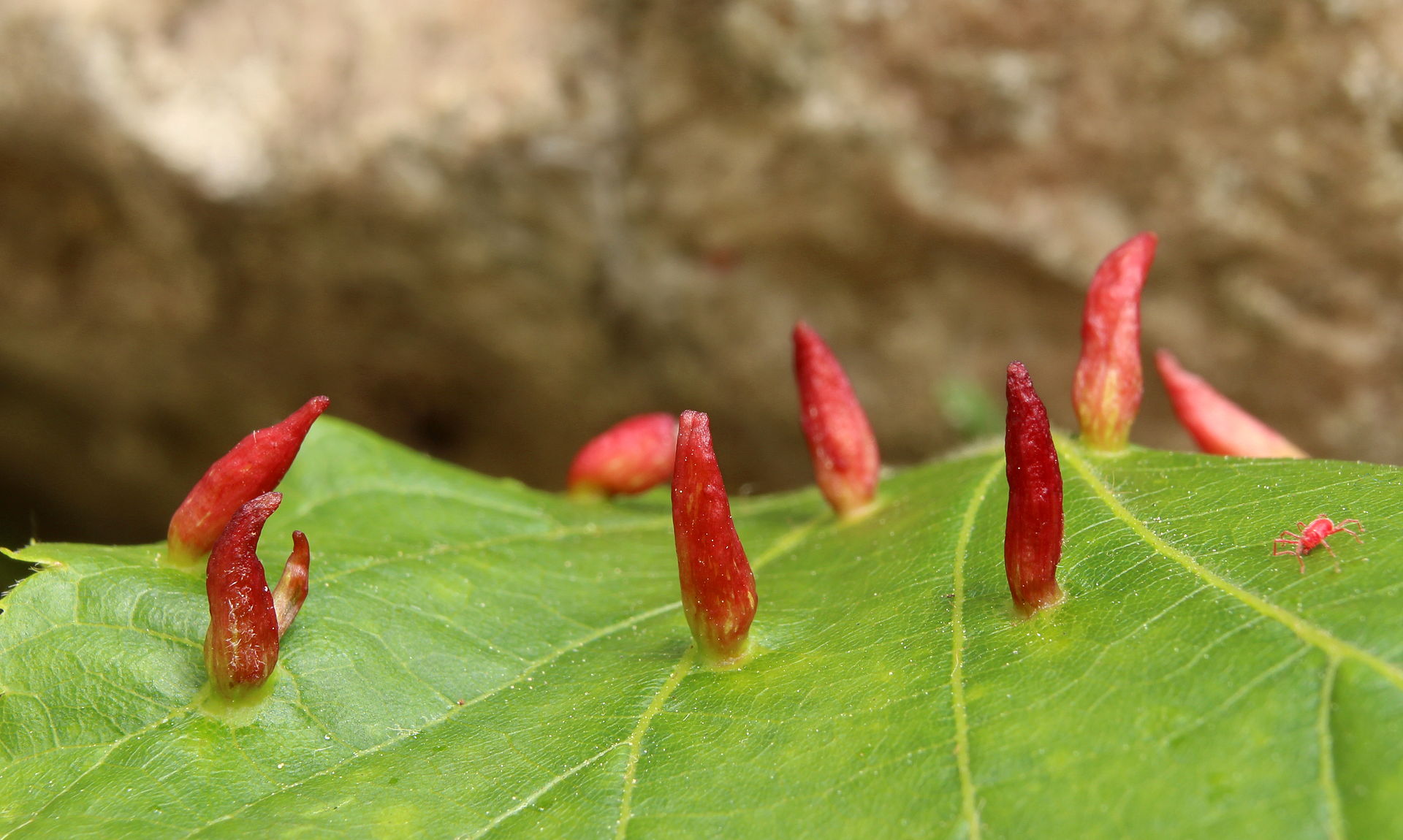
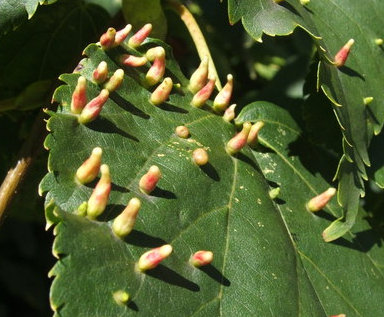
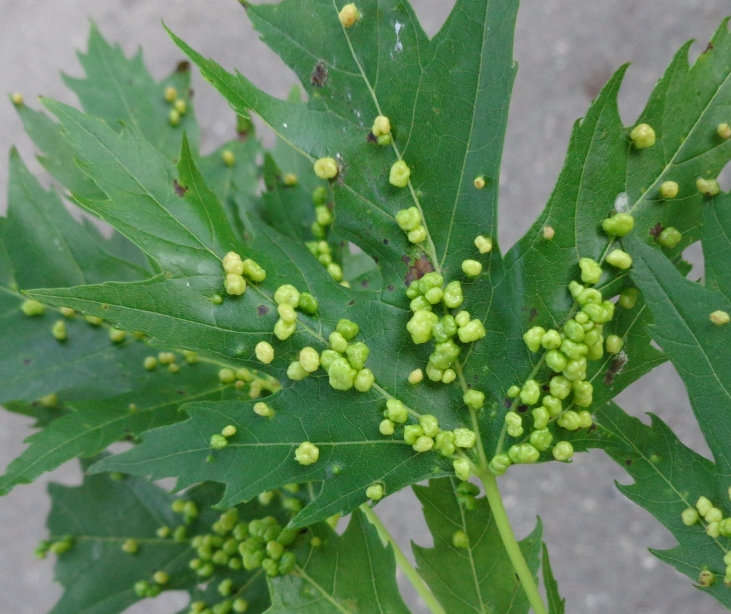
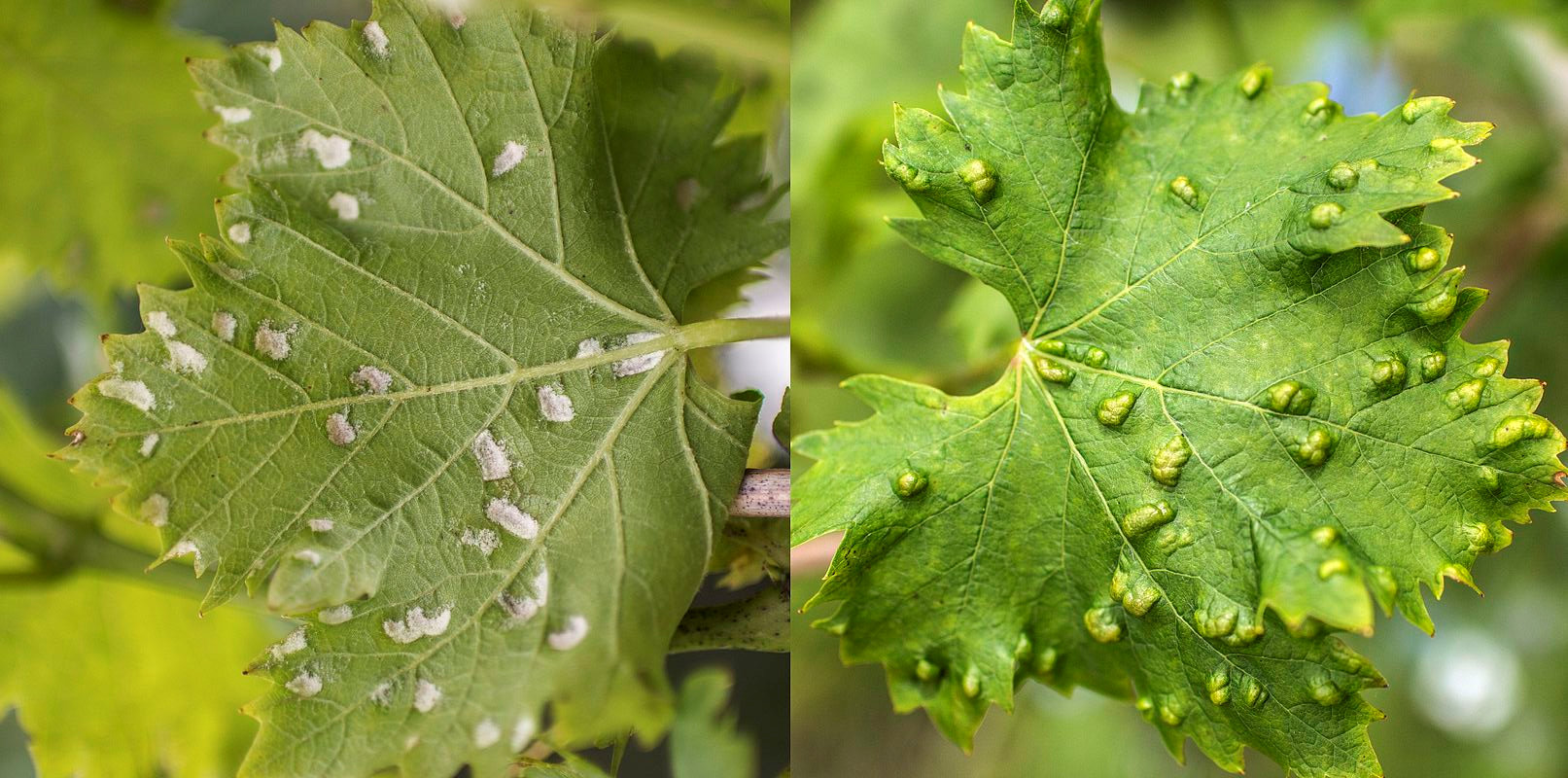
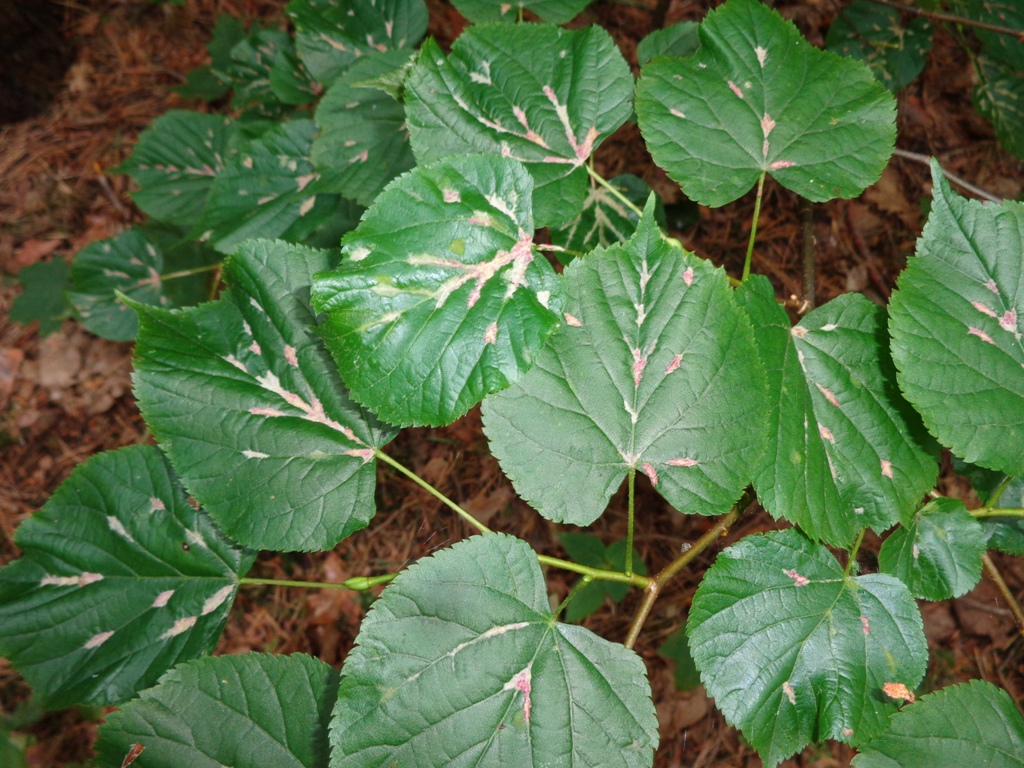
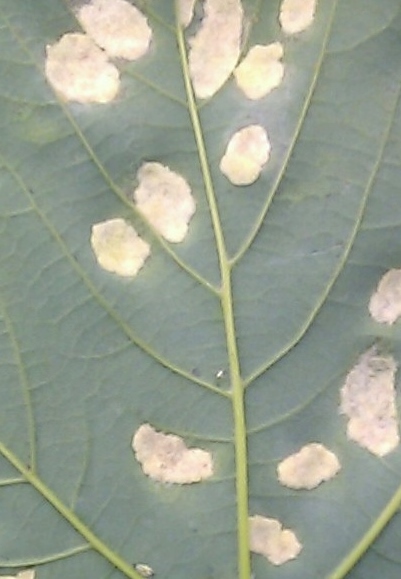
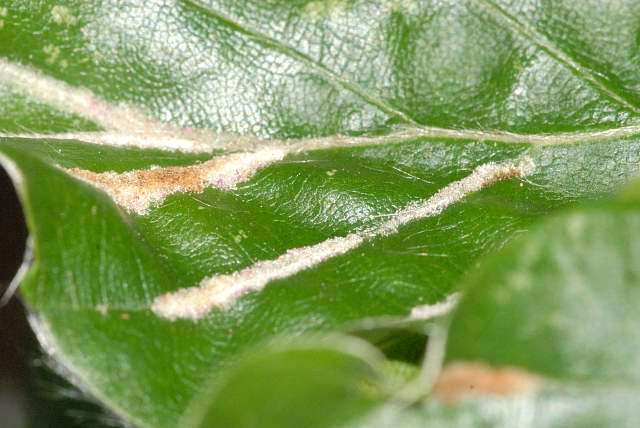
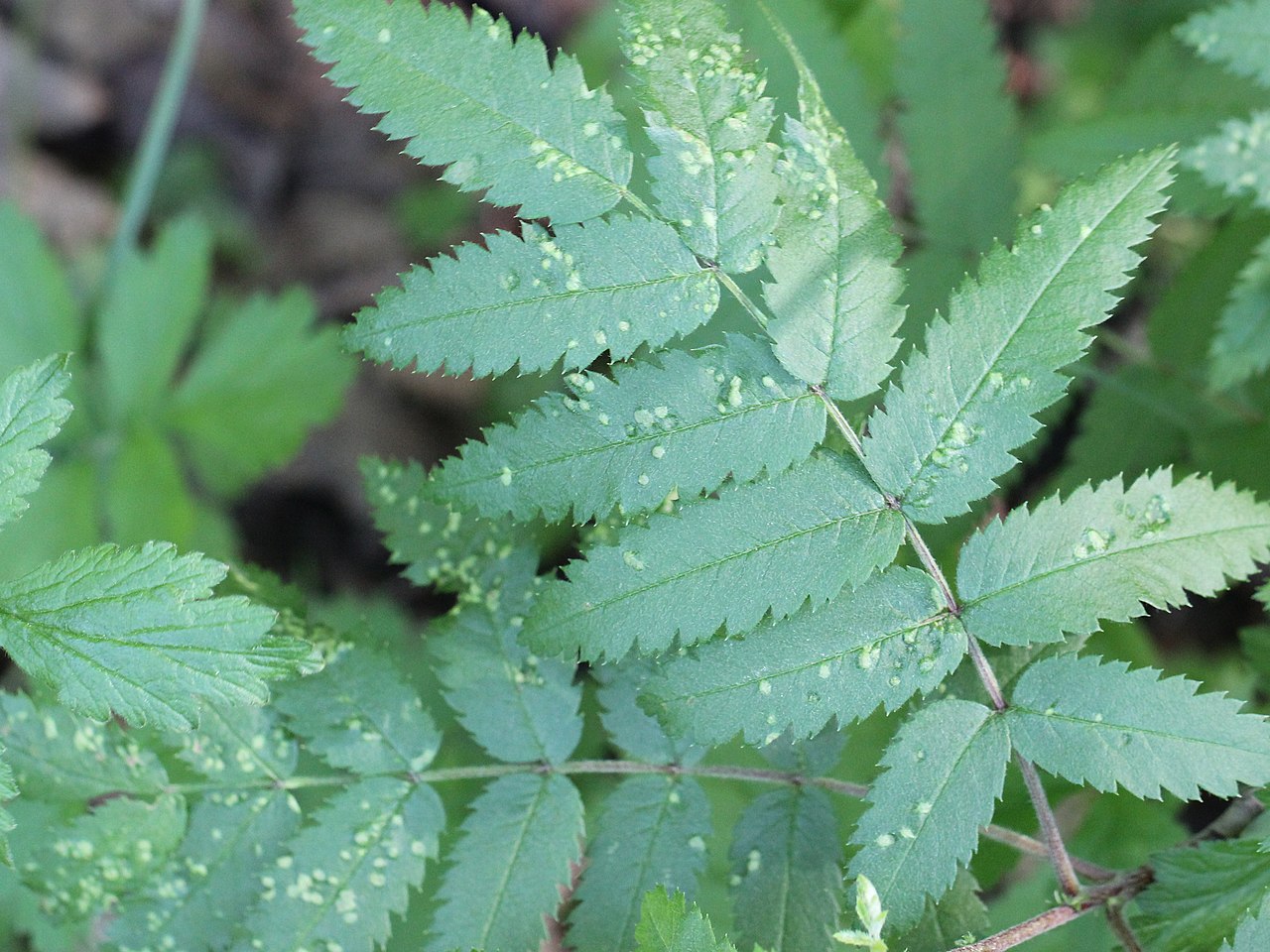
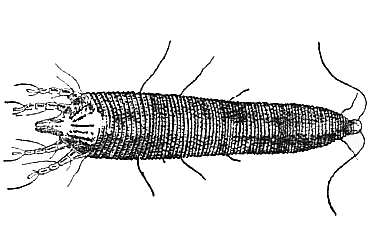
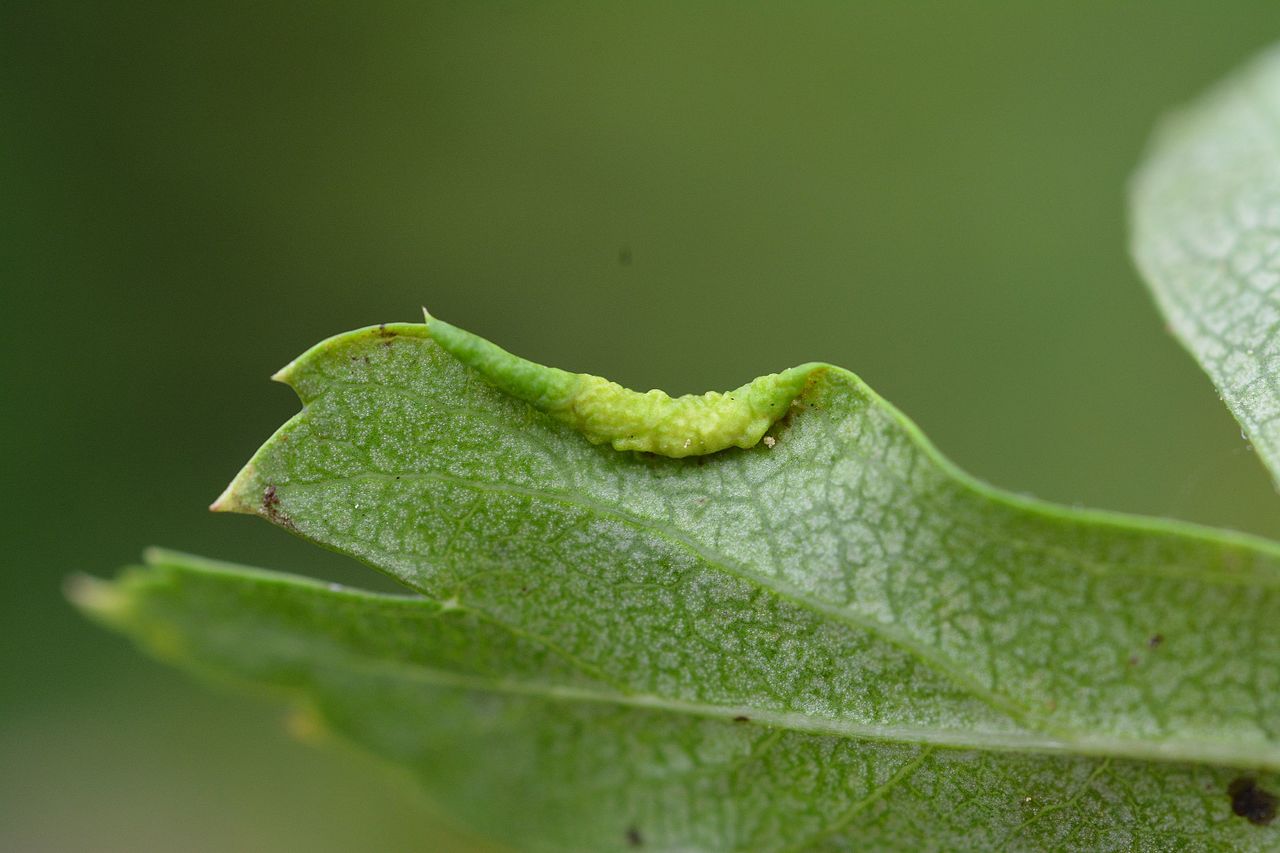
_gall,_Arnhem,_the_Netherlands.jpg)
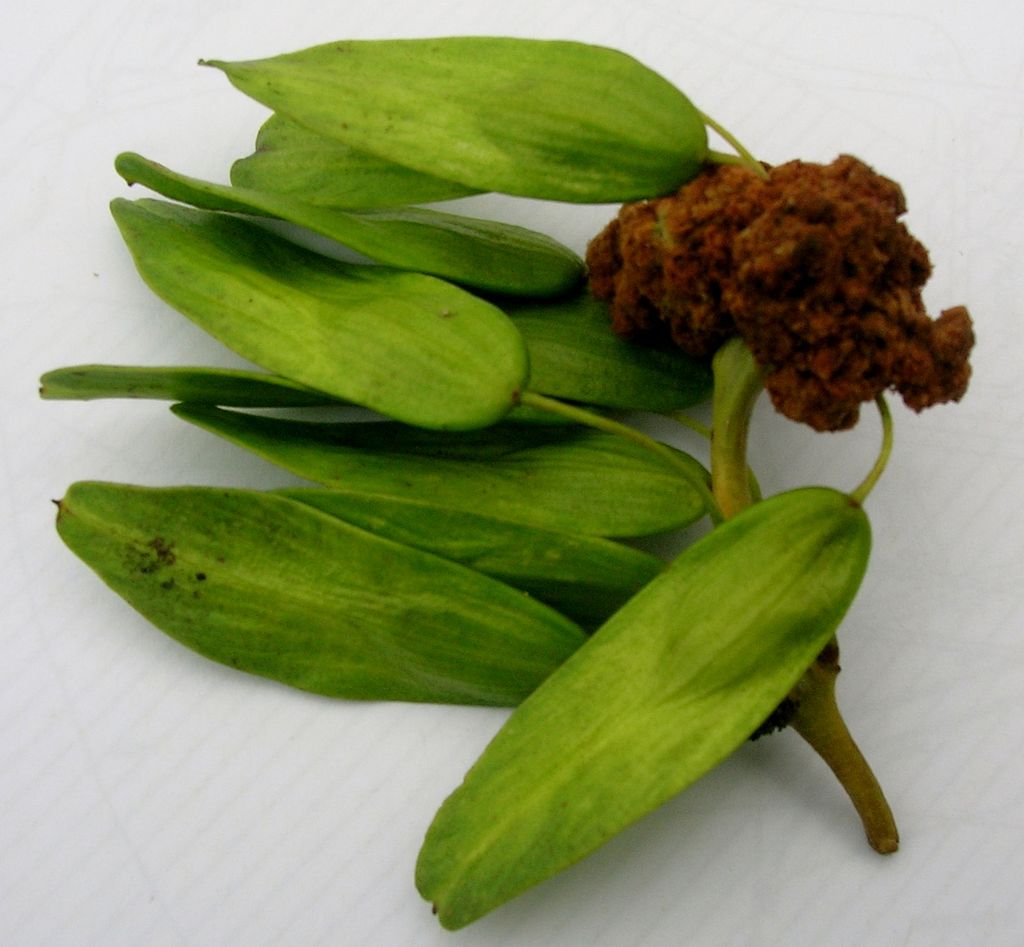
_-_(gall),_Molenhoek,_the_Netherlands_-_2.jpg)
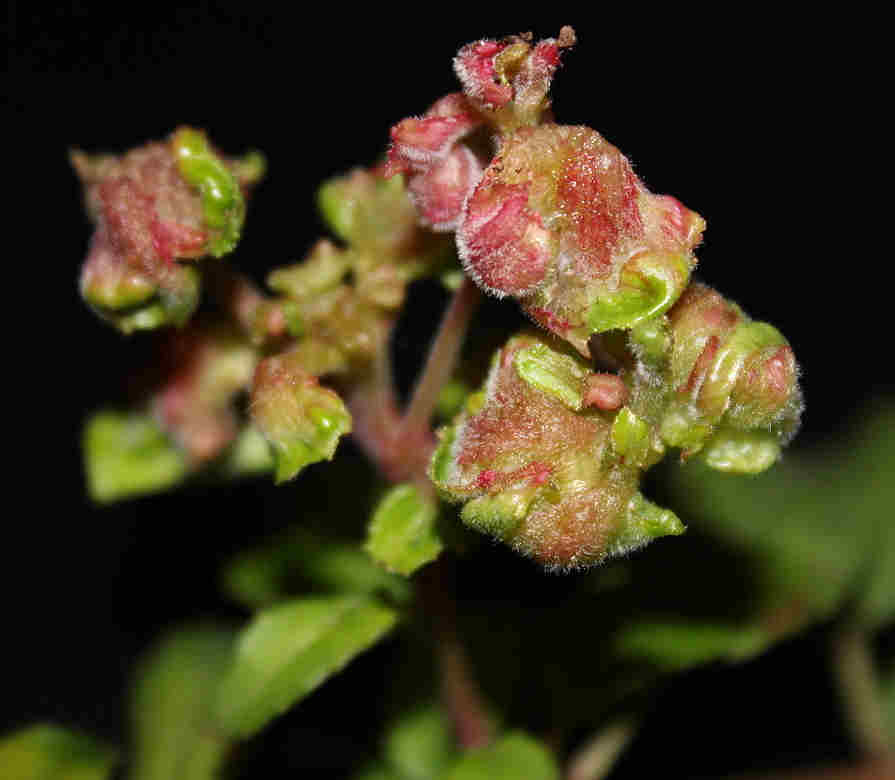
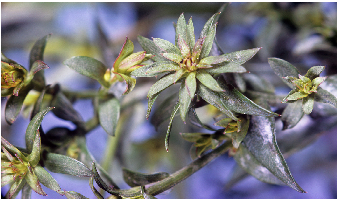
Left: Blackcurrant big bud mite, Cecidophyopsis ribis swollen galls
Right: Drawing of the mite responsible.
Gall mites
Plant galls are abnormal growths produced by a plant in response to the presence of a gall-forming organism. Many insects and mites, as well as some fungi and bacteria, are capable of causing galls, and these are introduced on our page here.
Species in Britain and Ireland
Gall mites are mostly in the Eriophyidae family of mites, the few exceptions belonging to the family Tarsonemidae, such as Phytonemus pallidus on Michaelmas daisy. These mites are microscopic (<0.5mm) in size but their presence is readily seen by the abnormal growths that they cause on plants. The galls occur in a variety of forms but are usefully specific to the species of gall mite.
Enclosed pouch or pimple on upper leaf surface. Examples are Lime tree nail gall, caused by Eriophyes tiliae on broad-leaved lime Tilia platyphyllos small-leaved lime T. cordata, and common lime T x europaea; and Eriophyes lateannulatus on small-leaved lime Tilia cordata; pimple galls caused by Aceria macrorhyncha and Aceria cephalonea on sycamore, and Aceria myriadeum on field maple; Elm pouch gall mite, Aceria campestricola on elm; Plum gall mite, Eriophyes similis, on plums and damsons.



Upward bulge in leaf blade with dense hairs on the underside. Walnut blister mite, Aceria tristriata, on walnut leaves; Grape vine erinose mite, Colomerus vitis, on grape leaves; Blister mites on lime foliage caused by Phytoptus erinotes and Eriophyes leiosoma.

Above left: Lime tree nail gall Eriophyes tiliae right: Nail gall Eriophyes lateannulatus
Left: Gall mite Aceria macrorhyncha


Left: mite gall Eriophyes vitis lower (left) and upper vine leaf surfaces.
Right: mite gall Eriophyes leiosoma on lime
Excessive hairs on underside of leaves without an upward bulge. Birch felt gall mite, Acalitus rudis, on birch leaves; Beech felt gall mite, Aceria nervisequa, on beech leaves; Sycamore felt gall mite, Aceria pseudoplatani, on sycamore leaves; Field maple felt gall mite, Aceria eriobia on field maple foliage.


Slightly raised discoloured blisters in leaf blade. Pear leaf blister mite, Eriophyes pyri (below), on pear and mountain ash leaves; Whitebeam blister mite, Eriophyes arianus, on common whitebeam Sorbus aria.

Abnormally enlarged buds. Blackcurrant big bud mite, Cecidophyopsis ribis, in winter buds on blackcurrant; Yew big bud mite, Cecidophyopsis psilaspis, in buds on yew
Abnormally enlarged buds. Blackcurrant big bud mite, Cecidophyopsis ribis, in winter buds on blackcurrant; Yew big bud mite, Cecidophyopsis psilaspis, in buds on yew
Thickened leaf margins. Hawthorn leaf margin gall mite, Phyllocoptes goniothorax on hawthorn leaves (below left); Willow leaf margin mite, Aculus magnirostris, on willow leaves (below right)

_gall,_Arnhem,_the_Netherlands.jpg)
Galled flowers. Ash inflorescence gall mite, Aceria fraxinivora, converts the flowers into brown woody structures; Michaelmas daisy mite, Phytonemus pallidus, converts the flowers of New York Aster Aster novi-belgii into rosettes of small green leaves.


Biology
Gall mites feed by sucking sap from their host plants. While doing so, they secrete chemicals that alter the plant’s normal development. The gall mites live and feed within the gall structures that they have helped create. Gall mites in the Eriophyidae family have slender elongate bodies with only two pairs of legs.
Some gall mites induce a dense growth of short hairs, mainly on the underside of affected leaves. This type of growth is known as a felt gall or erineum. The hairs are initially creamy white but often become brownish towards the end of summer. However, if the felt gall is developing on a purple-leaved form of a tree, such as beech or sycamore, the hairs are usually pinkish red.
Dispersal to new host plants is probably brought about by the tiny mites being carried by the wind, or by hitching a ride on more mobile insects or other animals.
Life cycle
Gall mites can have many generations within their galls. For most gall mites, the breeding season is during the summer but some, such as blackcurrant big bud mite, breed during the winter. Those that form galls during the summer usually vacate the galls in autumn and overwinter underneath bud scales or in bark crevices.
Role of gall mites in gardens
Most gall mites are relatively harmless animals that have no adverse effect on their host plants beyond causing the growth of the gall structures and so are additional biodiversity in a garden A few do have a more severe impact. Buds affected by blackcurrant big bud mite fail to produce any foliage or flowers. Heavy infestations can result on poor growth and little fruit. Fuchsia gall mite has only been in Britain since 2007 but is now widespread along the south coast of England and is spreading northwards. Once plants are heavily infested, normal new growth stops, with a complete loss of flowers. There are no effective control measures for fuchsia gall mite, other than destruction of affected plants.
Other sources of information
Website
Our plant galls page
Our gall wasps page
Our gall midges page
Web site of the British Gall Society
RHS gall mite information
RHS blackcurrant big bud mite information
RHS grapevine blister mite ainformation
Books
Chinery, M. (2011) Britain’s Plant Galls – a photographic guide. WildGuides Ltd
Redfern, M. Shirley, P. Bloxham M. (2023) British Plant Galls. Third Edition, A Field Studies Council AIDGAP key
Page text drafted by Andrew Halstead, reviewed by Andrew Salisbury, compiled by Steve Head
Proliferated growth. Broom gall mite, Aceria genistae (below left), converts buds into irregular growths of distorted foliage on Cytisus scoparius; Fuchsia gall mite, Aculops fuchsiae (below right), converts the shoot tips and flower buds into amorphous growths.
_-_(gall),_Molenhoek,_the_Netherlands_-_2.jpg)

Left:Sycamore felt gall mite, Aceria pseudoplatani
Right: Field maple felt gall mite, Aceria eriobia
Left: Sycamore felt gall mite, Aceria pseudoplatani
Right: Field maple felt gall mite, Aceria eriobia
Pear leaf blister mite, Eriophyes pyri
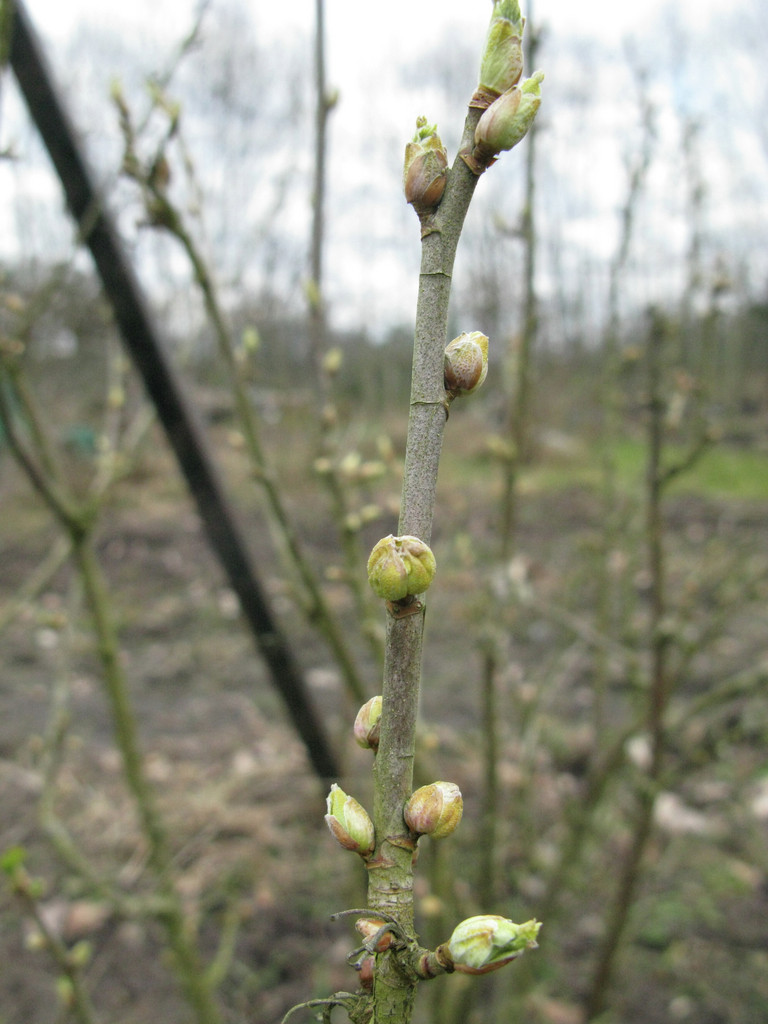
Left: Blackcurrant big bud mite, Cecidophyopsis ribis swollen galls
Right: Drawing of the mite responsible.













